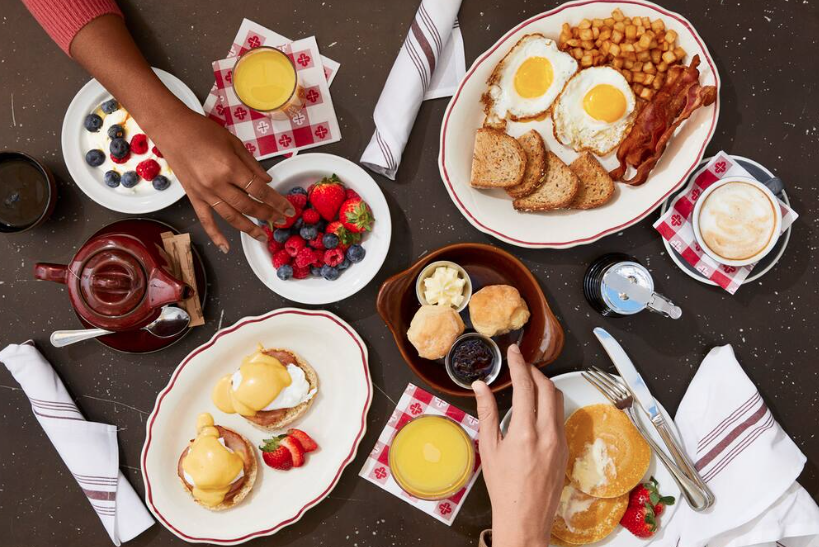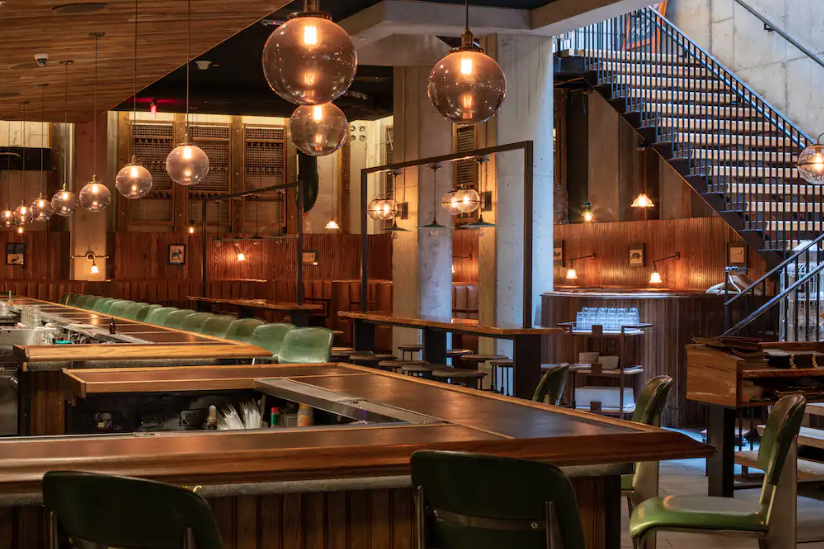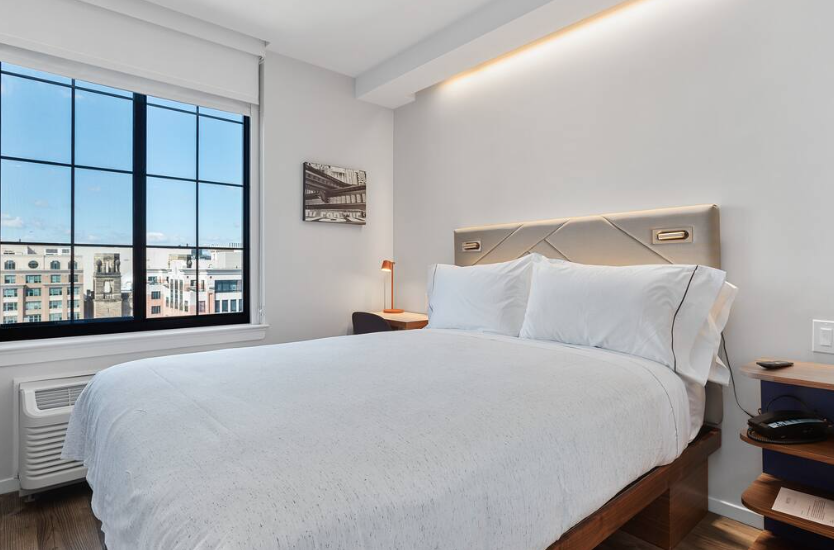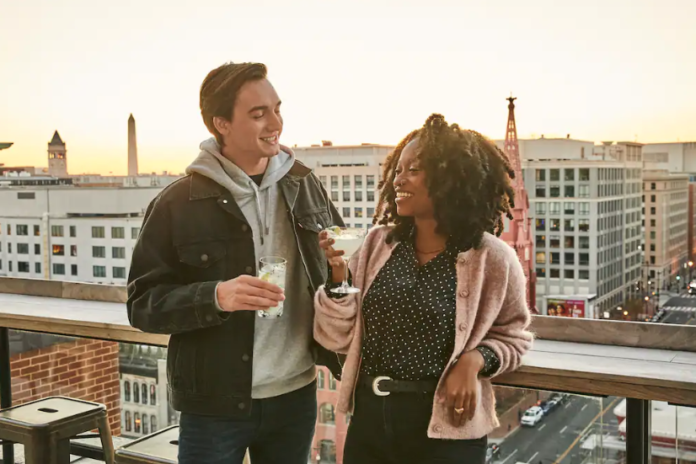Motto by Hilton Washington DC City Center offers Need-to-See Rooftop Whiskey Bar
Whether you’re a solo traveler or arriving as a pair, you’ll be sure to have a precisely comfortable stay.

Motto by Hilton has The DC Food Scene
DC’s food scene is on full display at Crimson, with rooftop bites and drinks, our subterranean whiskey bar, and refined Southern fare in a sophisticated diner. Contact us to book a private event.

Motto by Hilton is Located Close to Everything
Motto by Hilton Washington DC City Center is across the street from Gallery Place/Chinatown Metro station with links to Reagan National Airport, Capital One Arena, the Walter E. Washington Convention Center, and museums are within a few blocks. The White House, National Mall, and Union Station are a mile away.
Enjoy smart tech with a smaller, more efficient footprint in our Travel-Sized rooms.

Travel-Sized rooms
Travel-Sized rooms are the ultimate launchpad into a new city averaging at 150 square feet. The Full room is cozy and modern with a smaller, more efficient footprint and elevated sleep experience.
Stream your favorite shows to your 50-inch TV through our smart room technology and set the vibe with lighting and temperature control through the Hilton Honors app. Every room has a private bathroom with premium bath amenities and is equipped with a working surface, vanity, wardrobe, and safe.



